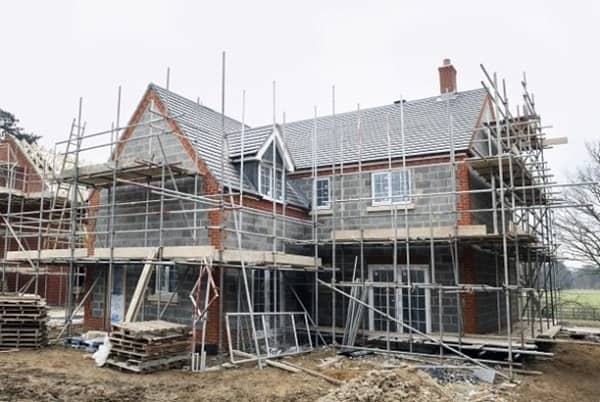Is your current home not the dream home you’ve always wanted it to be? Do you look around and think it could use a few updates? Maybe there are features you want to add or things needing repairs.
If that sounds familiar, you’re not alone. Many of us want to update or renovate our homes. However, most homeowners don’t know where to start. You might be excited about the possibilities but feel a little overwhelmed by the idea of making them a reality.
When it comes to remodeling, it’s good to be cautious and take your time. You don’t want to rush into projects without the proper planning. That can lead to all sorts of problems.
But what should homeowners do to plan their remodel projects? This post will walk you through the stages of planning and preparing for home remodel projects.
Start with your finances and budgeting
Before starting, homeowners should assess their finances and determine how much they can afford to spend. Look at all your financial records to consider how much you have available in savings and what you can afford to take from your monthly budget.
You also have several options for financing your remodel projects. If you have the available funds in savings, that can be a great option since you won’t have to borrow money. However, many banks offer home improvement loans. The option of taking a home equity loan may also be attractive. Some contractors may also be able to help you arrange financing.
However, it is also important to remember that not all projects follow the plan. Setting aside a contingency fund is a crucial part of budgeting for large home improvement projects. Typically, you want it to be at least 10% of the total budget. That way, unexpected costs don’t derail your home remodel.
Assessing and prioritising project ideas
Homeowners should get a clear idea of what they want and their goals before moving forward with any work. Whether upgrading your kitchen, installing new flooring, repainting walls, or finishing the basement, outlining and assessing ideas will help you maximize value and ensure the best result. If you’re considering a whole-home remodel, it may be helpful to go room by room, taking notes on what you want and what needs improvement.
Once you have a list of ideas and projects, the next step is to evaluate them based on how they align with your goals and needs. For example, your primary goal might be to increase comfort or make the home more convenient. Some homeowners might aim for projects that add value. You’ll also need to consider prioritizing necessary projects. For example, if you need roof repairs, that should come before something like retiling your bathroom.
Project planning and design
Once you’ve decided which remodeling projects to tackle first, it’s time to develop a plan. Start by defining your goals for each project and what you want it to be when completed. Make a list of specific changes like colors, materials, new features, etc.
Once you have an outline of what you want, it might also help to create a sketch. You can do this by hand or use various online tools. Beyond that, you may also want to research the various materials and other elements to get an idea of their average cost, ongoing maintenance, and durability.
Weigh doing the work yourself against hiring pros
Many homeowners may consider handling some aspects of the project to save money. However, it is important to weigh the pros and cons of each option for the various projects. DIY can cut labor costs, but it will demand more time from the homeowner. There’s also the question of whether you have the skills to complete the project and do the work to the same standards. The cost of renting or buying the necessary tools and equipment may also make it prohibitive.
Simple tasks like painting or refinishing cabinets might be good for DIYers. Some people might also be handy enough to do something like installing new lights. However, something more complex, like rewiring the breaker box, is better left to professionals. Mistakes in some areas can lead to costly repairs, safety hazards, or code violations. While hiring pros might cost a little more, it is worth it to avoid these issues. You might also be able to do some work yourself while leaving the specialized projects to the professionals.
Search for the right contractors
Now that you know where you’ll need professionals, it’s time to start putting your team together. Asking friends, neighbors, and family members for recommendations can be a good place to start. You can also research local contractors online and read their reviews. Always check for proper licensing, insurance, and experience in the type of work you need.
Once you have a shortlist of qualified professionals, it’s time to start reaching out and getting quotes. However, it is important to remember that the lowest bid isn’t always the best option. In fact, one that is too low might be a red flag. Instead, you want to balance price with factors like skill, experience, quality workmanship, and reputation.
Preparing your home and family
Before renovations begin, take steps to prepare your home and minimize disruptions. Start by clearing out the work area. Relocate furniture if possible and remove valuable items. Cover surfaces to protect them from dust and debris. Plastic sheeting can be a good option for large items you can’t move from the area.
Set up a designated workspace for tools and materials to keep everything organized. If your remodel affects essential areas like the kitchen or bathroom, plan alternative solutions. You may also need to arrange temporary storage for large materials that may not fit in the home right away. Temporary storage could also be a good idea for large items you want to protect during the project.
Your family’s safety is also a key concern. Discuss the project with your family and set expectations. Explain that work areas may be hazardous and that they should avoid entering them. If you have young children or pets, you may need to find ways to exclude them from work areas.
Wrapping the projects up
Once the remodel is complete, take the time to review everything before considering the project finished. Walk through the space with your contractor to ensure all work meets your expectations and matches the agreed-upon plan. If you notice any issues, address them before making final payments.
Cleaning up is another key step in finishing a home remodel. It is also important to plan clean-up from the start because you may need to rent a dumpster or make plans to dispose of hazardous waste. Homeowners may want to consider hiring post construction cleaning services. These professionals know how to clean up after these projects and can have your home looking its best.
With these steps, you can plan a successful home remodel and ensure the best results. Remember, you’ll also need to work closely with contractors to refine the details, set timelines, and keep things on track. However, establishing a clear plan can ensure a smooth process.








